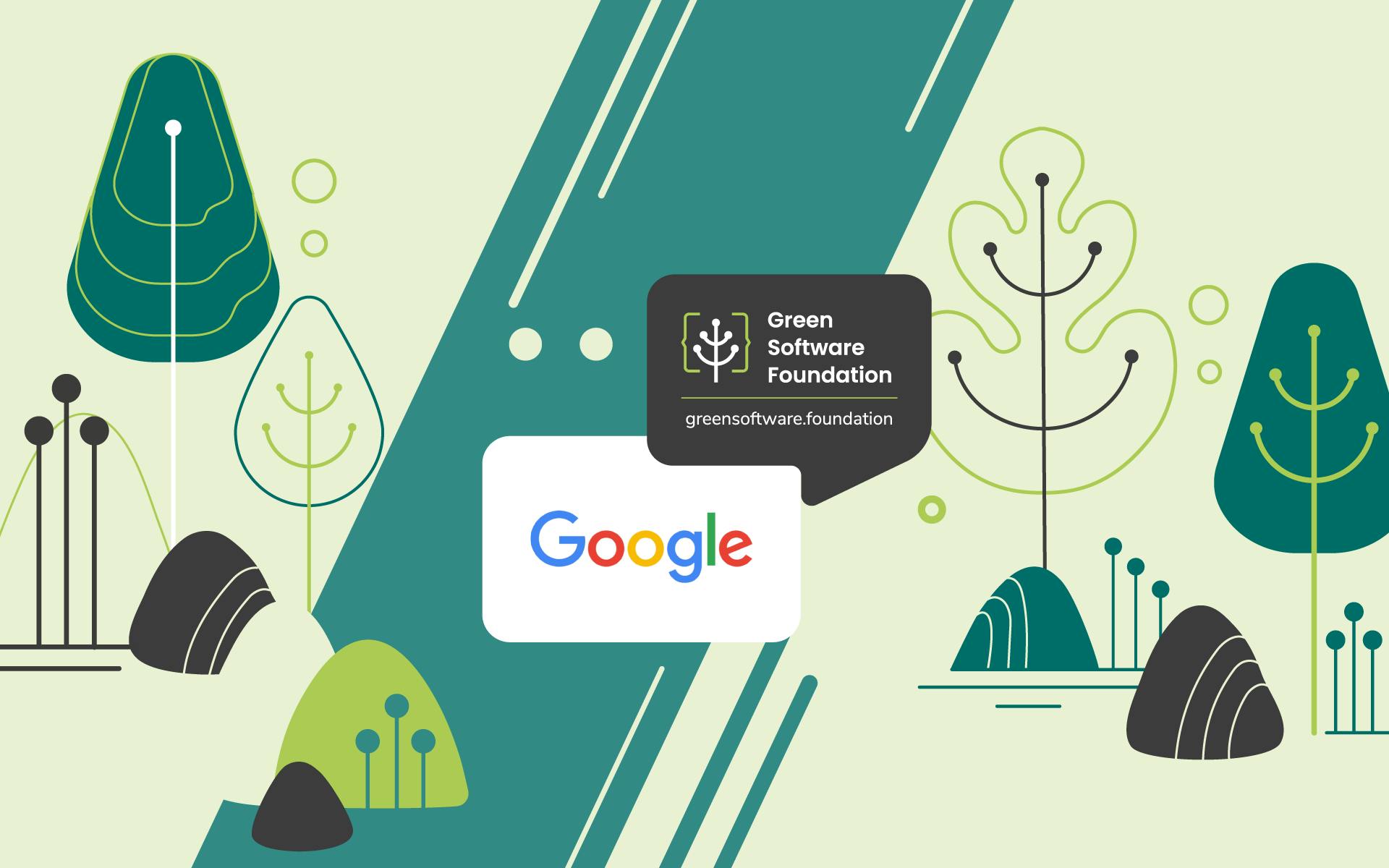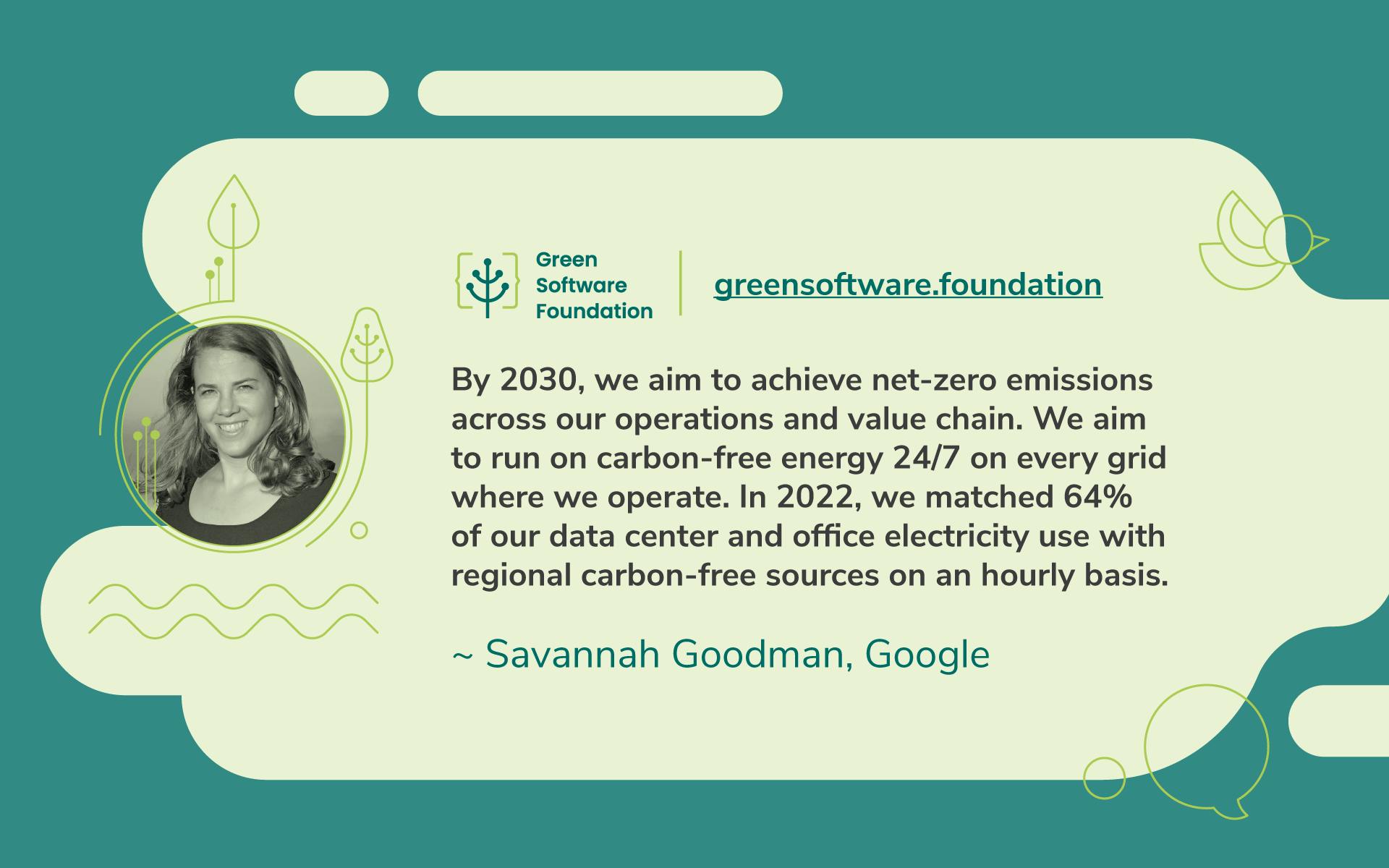Behind the face of Google is a corporation deeply committed to sustainability. With the mission to organize the world’s information and make it universally accessible and useful, Google engages billions of people every day. Grounded in this mission, they provide individuals, organizations, and governments with quality information to make decisions and build tools to drive positive action for the planet. A profound legacy in research and breakthroughs in AI allow people new ways of accessing information and accelerating innovation needed to tackle climate change.
We spoke to Savannah Goodman. She is responsible for data and software climate solutions at Google.
Tell me about your role with Google and your journey to get there
I lead the team that incubates data and software solutions to enable Google and our partners to meet ambitious climate targets. This includes Google’s 24/7 carbon-free energy and 2030 Net Zero goals. I have been an Energy Nerd for a long time. I knew I wanted to pursue a career in clean energy since I was in high school, where I helped build a biodiesel lab to run our football concession stand on waste vegetable oil. Before joining Google’s Climate team, I worked at Tesla as a Product Manager for utility and commercial scale battery applications and as the VP of Product and Modeling for a startup working on virtual power plants in NYC.
What are the primary sustainability goals for Google?
We have three key focus areas in our enterprise-wide work to help lead the transition to a more sustainable future:
Empowering individuals to make more sustainable choices
Building tools and making information accessible so that partners and customers can reduce their emissions and advance technology for climate action, and
Operating our business sustainably.
In 2017, we became the first major company to match 100% of the annual electricity consumption of our global operations with renewable energy purchases, which we’ve achieved every year since. But, while this was an important milestone, we knew we needed to go further to fully decarbonize our electricity consumption.
By 2030, we aim to achieve net-zero emissions across our operations and value chain. This is supported by an ambitious clean energy goal to run on carbon-free energy 24/7 on every grid where we operate. This means purchasing carbon-free energy to match the electricity consumption of our data centers and offices worldwide, every hour of every day. In 2022, we matched 64% of our data center and office electricity use with regional carbon-free sources on an hourly basis.
But we also know that we can’t rely on existing energy sources, mainly wind and solar, alone to get to net zero. That’s why we’re working to commercialize next-generation technologies, like geothermal, that are ‘always-on’ and can fill critical gaps in powering the grid with clean energy around the clock. And in our day-to-day operations, carbon-intelligent computing is helping us reduce emissions by shifting moveable compute tasks across different data centers and to other times based on regional hourly carbon-free energy availability.
Where do you stand with regard to green software?
As we work towards reaching our Net Zero goal by 2030, it's imperative to weave sustainability right into the fabric of how we design our software and infrastructure. Energy-efficient software has always been a priority for Google, and with our leadership in AI, we have focused on driving an optimized stack for growing compute demands. A few examples to show how we have invested in sustainable software and infrastructure are:
To support the next generation of fundamental advances in AI, the purpose-built TPU (Tensor Processing Unit) reduced our physical infrastructure footprint in 2016 with its industry leading efficiency. And we are continuing to improve - for example, TPUv4 is twice as efficient as TPUv3.
Cloud Carbon Footprint launched in 2021 to show customers their carbon emissions across Google Cloud assets, including an assistant to guide the customers on reducing their carbon footprint.
Our carbon-intelligent platform uses day-ahead predictions to time and location shift flexible compute tasks.
Investment in research to optimize resources and reduce carbon, including research on how to reduce resources for machine learning.
In addition, we are soon releasing a “Go Green Software” e-book to assist developers in reducing their carbon footprint.
Why join the Green Software Foundation?
Google joined GSF to contribute to and learn from the broader ecosystem of green software. We have worked hard to make our software products green - through energy-efficient data centers paired with clean energy procurement and through providing tools to our consumers for reducing their digital footprint. We constantly look for ways to improve our approaches. We are excited to learn from the vibrant and innovative GSF community.
We have also noticed that many Google Cloud customers and partners are either members of GSF or invested in green software in another way. Sustainability is an essential topic for most of our key stakeholders, and we would like to broaden our engagements with them in the communities they are involved in.
Where are your green software initiatives headed?
With education playing a pivotal role in fostering the future growth of green software, Google is working on sharing information with our software engineers about the carbon footprint of our development environments and services so that they can see the impact of their choices - for example, switching from desktops to laptops or running their workloads in different data centers.
At Google Cloud, we aim to increase the number of customers monitoring their carbon footprint. We are also working to expand this data to our Ads and Workspace customers. The goal is for everyone to at least be more aware of their digital service carbon emissions so that we can work together to mitigate them through sustainable digital transformation. Google Cloud has also set a focus on educating how reducing carbon and cost are both possible in parallel. The “Go Green Software” ebook will include best practices for customers, also applicable to other hyper-scalers beyond Google Cloud. We are seeing demand for this kind of information from our customers. There’s more work to do in the area - we need to create best practices for the different personas engaged in the development ecosystem - including engineers, developers, product managers, project managers, and beyond.
Another focus area will be managing the carbon and energy usage of AI-related activities. We can leverage the guidance from research on carbon footprint and the impact of the next generation of TPU to continue to manage AI and Generative AI effects.
How do we push past the challenges in green software?
Due to business pressure on companies to have more efficient and lower-cost infrastructure, there has yet to be a more significant focus on sustainability for software. Many technology leaders are either unaware of the concept of green software, which is why Google Cloud concentrates on educating, or they have limited knowledge given the technical nature of the subject matter. For example, it’s not always understood that beyond the emissions from operating software, there are also embodied emissions of server infrastructure, desktops, and displays. So awareness is a major challenge. We are working to combine GreenOps with FinOps to raise customer awareness and more closely tie sustainability with cost optimization.
A secondary challenge is technical debt in the customer landscape. Making an impact will therefore take time. Suppose customers move from an infrastructure mindset to a platform mindset. In that case, they no longer need to manage the underlying aspects, and the hyper-scalers can focus on making their platforms more sustainable.
Another challenge is that even once companies are made aware of the emissions through carbon reporting tools, there’s a lack of consistency amongst methodologies and metrics. This makes comparing alternative solutions for selecting the least carbon-intensive options difficult.
Is Google working on any other sustainability initiatives?
Some other data and software climate solutions we are working on include:
We are continuing to improve our carbon-aware computing capabilities so that we can shift workloads in time and space. This allows us to minimize our carbon footprint and support grid needs by providing demand response.
We’ve helped develop Cloud and Workspace Carbon Footprint solutions, enabling customers to measure and reduce their footprint by using Google services.
We created an insights platform that enables Cloud customers to baseline their carbon-free energy score and develop an optimized energy portfolio.
We’ve developed tooling for granular energy attribute certificates that enable hourly electricity tracking and incentivize the deployment of flexible carbon-free technologies.
Where do you see yourself adding value to the GSF mission?
We are excited to participate by actively contributing to several GSF working groups. We are eager to leverage learnings and research related to our carbon-aware compute platform to contribute to the standards working group as well as to some of the relevant open-source projects, such as the Carbon Aware SDK and Impact Engine Framework. We’d also like to share the sustainability developer principles we’ve developed for Google Cloud customers and the learnings from developing our Carbon Sense Suite.

This article is licenced under Creative Commons (CC BY 4.0)
